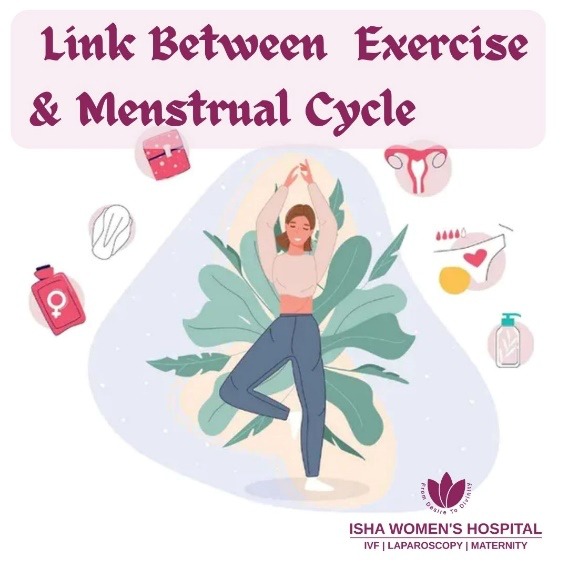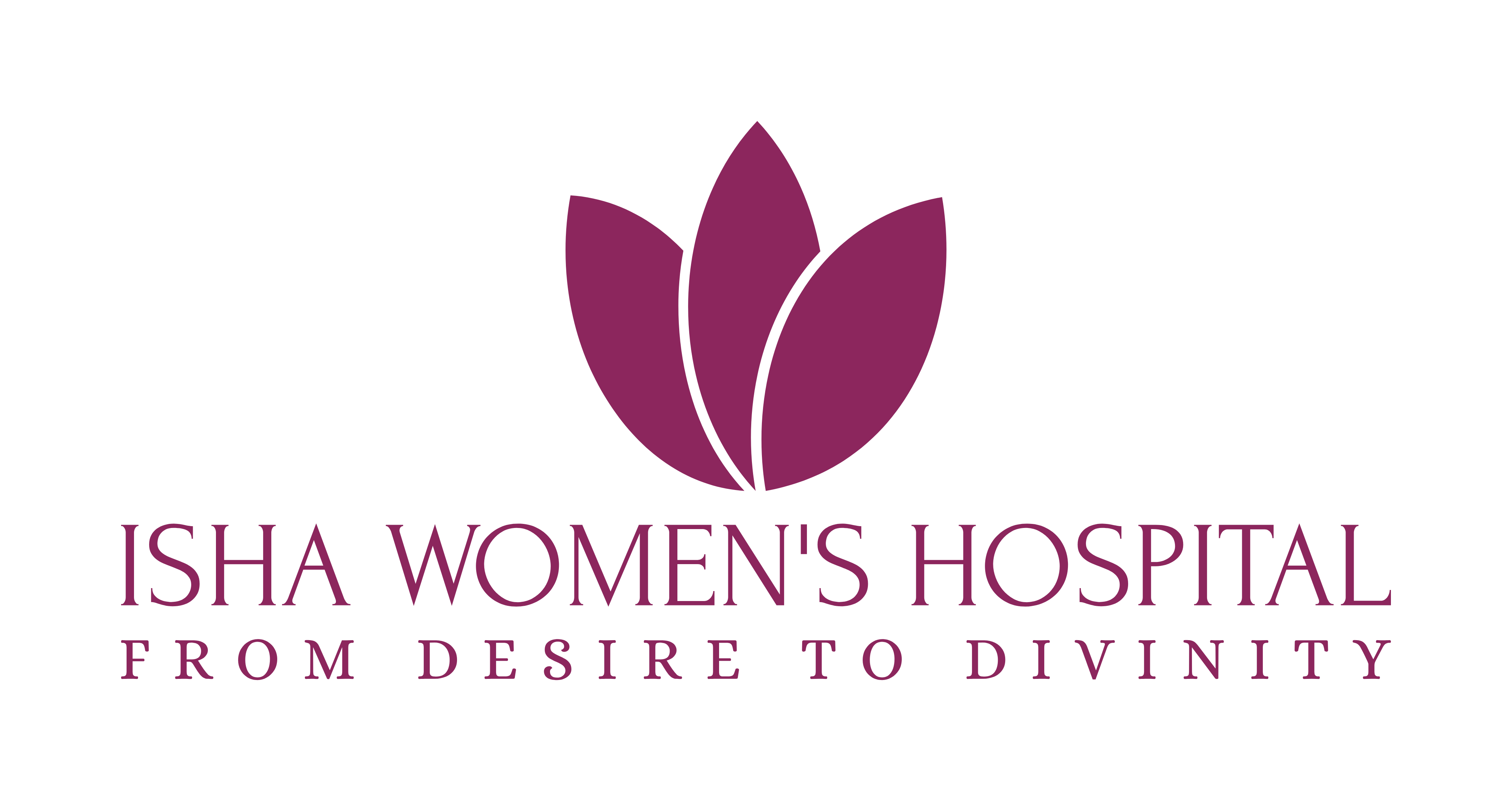The Link Between Exercise and Healthy Menstrual Cycle

For many women, periods are more than just a monthly occurrence—they can come with irregular cycles, painful cramps, mood swings, and fatigue. While food and stress management are important, exercise plays a powerful role in keeping your hormones in check and your periods predictable.
Whether you're dealing with PMS, struggling with PCOS, or simply looking to feel better throughout the month, the way you move your body matters. In this blog, we’ll explore the connection between exercise and a healthy menstrual cycle—from how your hormones work to the best workouts for each phase of your period.
Let’s break it all down so you can sync your workouts with your cycle
Understanding Your Menstrual Cycle & Hormones
What Happens During Your Menstrual Cycle?
The average menstrual cycle is about 28 days long (though cycles can range between 21 to 35 days). It's divided into four main phases, each with distinct hormonal changes and physical effects:
1. Menstrual Phase (Day 1–5): This starts your cycle, marked by bleeding (your period), as the uterine lining sheds.
- Hormones: Estrogen and progesterone are at their lowest.
- What You May Feel: Fatigue, cramps, low energy.
- Hormones: FSH (Follicle Stimulating Hormone) rises, stimulating the growth of ovarian follicles. Estrogen also increases, thickening the uterine lining.
- What You May Feel: Increased energy, improved mood, better exercise tolerance.
- Hormones: A sharp rise in LH (Luteinizing Hormone) triggers ovulation. Estrogen peaks just before ovulation.
- What You May Feel: High energy, increased libido, slight pelvic discomfort for some.
- Hormones: Progesterone rises (secreted by the corpus luteum) to support the uterine lining. Estrogen also remains moderately high.
- What You May Feel: Mood swings, bloating, breast tenderness, cravings—common PMS symptoms.
Your cycle is regulated by a coordinated hormone cycle involving:
- Estrogen: Builds the uterine lining and supports follicle development.
- Progesterone: Stabilizes the uterine lining and supports early pregnancy.
- FSH (Follicle-Stimulating Hormone): Stimulates ovarian follicles.
- LH (Luteinizing Hormone): Triggers ovulation.
How Physical and Emotional Health Affects the Cycle
- Stress, whether physical (over-exercising, poor sleep) or emotional (anxiety, work pressure), can suppress ovulation.
- Extreme weight changes (either underweight or overweight) can disrupt hormonal signals.
- Poor diet can affect hormone synthesis and insulin sensitivity, indirectly impacting ovulation.
A regular menstrual cycle depends on hormonal balance. When your hormones are in sync:
- You ovulate regularly, which is necessary for fertility.
- Your periods come on time and with manageable symptoms.
- Your body maintains a stable metabolic and emotional rhythm.
Several lifestyle factors can throw off this delicate hormonal balance, including:
- Chronic stress – elevates cortisol, which can inhibit reproductive hormones.
- Poor diet – high sugar, low nutrient intake affects insulin and estrogen levels.
- Over-exercising or intense training – depletes energy reserves, leading to low estrogen and missed periods.
When done in moderation, exercise is a powerful tool for hormonal harmony:
- Releases endorphins, natural feel-good hormones that combat PMS and stress.
- Regulates insulin – especially helpful in managing PCOS, where insulin resistance is common.
- Lowers cortisol levels when combined with restful sleep and proper nutrition.
Benefits of Exercise for Menstrual Health
By syncing your workouts with your menstrual phases and understanding what your body needs, you can reduce period-related symptoms and feel more in control of your health.
How Exercise Supports a Healthy Menstrual Cycle
Here are some of the key benefits of regular, balanced exercise for menstrual health:
- Regulates Hormones - Exercise improves insulin sensitivity, which helps balance estrogen and androgens, especially helpful for women with PCOS or irregular cycles.
- Eases PMS Symptoms - Physical activity releases endorphins, which naturally reduce bloating, mood swings, irritability, and breast tenderness.
- Reduces Cramps - Exercise increases blood circulation and muscle relaxation, easing uterine cramps during menstruation.
- Supports Weight Balance - Maintaining a healthy body weight through exercise reduces the risk of excess estrogen production from fat cells, which can disrupt your cycle.
- Boosts Mood & Sleep - Regular movement promotes better sleep and relaxation, reducing cortisol (stress hormone) and improving overall hormonal stability.
Best Types of Exercise for Each Phase of Your Cycle
1. Menstrual Phase (Days 1–5)
Focus: Gentle movement & rest
Your hormone levels (estrogen and progesterone) are at their lowest. You may feel tired, bloated, or crampy.
- Recommended Activities: Light stretching, Gentle yoga, Walking, Deep breathing or meditation
2. Follicular Phase (Days 6–14)
Focus: Building strength and stamina
Estrogen starts to rise, boosting energy and motivation. You’ll likely feel more upbeat and stronger.
- Recommended Activities: Cardio workouts (cycling, jogging), Strength training, Group fitness classes, Dance workouts
3. Ovulation Phase (Around Day 14)
Focus: Peak performance
Estrogen peaks, and you may feel your most confident and energetic. Reaction time and coordination also improve.
- Recommended Activities: High-Intensity Interval Training (HIIT), Running or fast-paced cardio, Power-based exercises (e.g., sprints, jump squats)
4. Luteal Phase (Days 15–28)
Focus: Slower, mindful movement
Progesterone rises, and many women feel bloated, tired, or moody. Energy starts to dip before your next period.
- Recommended Activities: Moderate cardio (swimming, cycling), Pilates or barre, Resistance band workouts, Light strength training
Adjust Intensity Based on Energy Levels
Your energy levels will naturally fluctuate throughout your cycle, and that’s completely normal. The key is not to force your body into intense workouts during low-energy phases. Instead, support your cycle with the right kind of movement at the right time.
Exercise & Menstrual Disorders
Let’s explore how exercise affects specific menstrual disorders and when it’s time to adjust your routine for better hormonal health.
PCOS, Exercise & Irregular Periods
How Exercise Helps Women with PCOS
- Improves Insulin Sensitivity: Women with PCOS often have insulin resistance, which leads to high insulin levels and increased production of androgens (male hormones like testosterone). Regular physical activity helps your body use insulin more effectively, lowering insulin and testosterone levels.
- Regulates Ovulation: Moderate exercise supports hormonal balance, promoting regular ovulation and improving menstrual regularity over time.
- Manages Weight: Even a 5–10% reduction in body weight can significantly restore ovulation in women with PCOS. Exercise helps in burning fat, especially around the abdomen, where excess fat is hormonally active.
- Reduces PCOS Symptoms: Consistent activity helps reduce acne, unwanted hair growth, and mood swings—common symptoms linked to high testosterone.
- Brisk walking
- Strength training
- Cycling or swimming
- Yoga and Pilates for stress reduction
Overtraining & Missed Periods: When Exercise Goes Too Far
What Is Hypothalamic Amenorrhea?
This condition occurs when intense exercise, low body fat, or chronic stress signals the brain to shut down reproductive hormone production, halting ovulation and menstruation.
Warning Signs to Watch For:
- Missing your period for three or more consecutive months
- Constant fatigue and low energy
- Difficulty sleeping or mood swings
- Trouble concentrating or increased anxiety
- Loss of interest in exercise or irritability
- Competitive athletes
- Ballet dancers, gymnasts, marathon runners
- Women following strict diets or experiencing chronic stress
- Those who work out multiple hours a day without adequate rest
- Reduce workout intensity and frequency—incorporate rest days
- Eat more calories to support energy demands
- Manage stress with sleep, therapy, or gentle movement like yoga
- Consult a fertility or hormone specialist if your periods are absent for 3+ months
Whether you're dealing with PCOS or missing periods from overtraining, remember: your menstrual cycle is a vital sign of your health. Using exercise wisely can improve your reproductive and emotional well-being—but only when done in balance with your body's needs.
Practical Tips to Sync Workouts with Your Cycle
Here’s how to move smarter by syncing your workouts with your cycle phases and supporting your hormones through food and hydration.
How to Exercise Smarter Based on Your Period
Being aware of where you are in your menstrual cycle helps you tailor workouts that feel good and do good.
Practical Tips:
- Track Your Cycle: Use a period-tracking app or journal to log symptoms, energy levels, and exercise performance. This helps you notice patterns and adjust activity accordingly.
- Listen to Your Body: On days when you have cramps, fatigue, or strong cravings, choose gentler workouts like stretching or walking. When you feel energized, go for strength training or cardio.
- Rest Is Productive: Don’t push through pain or exhaustion. Rest days are just as important for hormonal balance and muscle recovery.
- Fuel Properly: Always eat a balanced meal or snack before and after workouts. This helps stabilize blood sugar, prevent dizziness, and support hormone health.
What you eat throughout your cycle can enhance the benefits of exercise and ease symptoms like PMS, cramps, and mood swings.
Cycle-Syncing Nutrition Tips:
- During Menstruation (Days 1–5): Focus on iron-rich foods like leafy greens, lentils, dates, and lean meats to replenish blood loss.
- During Luteal Phase (Days 15–28): Eat healthy fats and proteins—like avocados, nuts, eggs, and fish—to keep blood sugar stable and curb cravings.
- All Phases: Include magnesium-rich foods (spinach, pumpkin seeds, bananas) and B vitamins (whole grains, legumes) to reduce bloating, fatigue, and PMS.
- Hydration Is Key: Drink plenty of water and herbal teas. Avoid sugary drinks and processed foods, which can worsen PMS and inflammation.
- The right movement routine can reduce cramps, boost your mood, and keep your cycle predictable.
- Tracking your energy and syncing workouts to your cycle leads to more effective and enjoyable fitness.
- Rest and nourishment are just as vital as the exercise itself.
- If you’re struggling with irregular cycles, PCOS, or exercise-related period issues—you’re not alone.
At Isha Women’s Hospital, Dombivali, Dr Chinmay Pataki one of the best fertility expert specializes in comprehensive, compassionate care for every stage of a woman’s life. Under the expert guidance of Dr. Chinmay Pataki, recognized as the best gynecologist in Dombivli, combines cutting-edge fertility treatments with personalized lifestyle support to help you thrive.
Your health is your power—nurture it, honor it, and never hesitate to seek the support you deserve.
Book your consultation today at Isha Women Hospital and let us help you achieve hormonal harmony and complete women’s wellness.
Frequently Asked Questions (FAQs)
Ans - Yes—regular, balanced exercise can support ovulation and cycle consistency.
2. What workouts are best for period cramps?
Ans - Light movement like yoga, walking, or swimming ease cramps and improve circulation.
3. Why did I lose my period after starting intense workouts?
Ans - You may be overtraining or under-fueling—talk to a doctor if you’ve missed 3 or more cycles.
4. Is it okay to exercise during my period?
Ans - Yes—just adjust intensity based on your symptoms and energy levels.
5. Can exercise help with PMS?
Ans - Absolutely—it reduces stress, bloating, and mood swings naturally.
